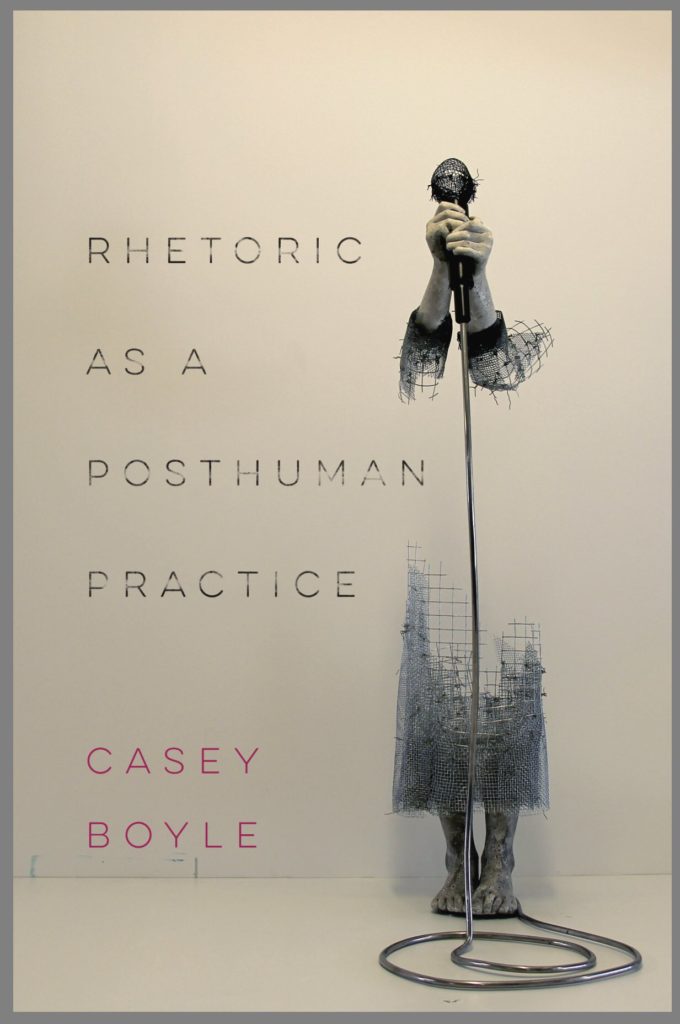Rhetoric as a Posthuman Practice
In response to the pervasiveness of emerging communication technologies, Rhetoric as a Posthuman Practice proposes that information be understood as an embodied, material practice. The guiding proposition for this book is that digital rhetoric now concerns how bodies, broadly construed, become informed through practice that includes not only traditional communication activity but also how information technologies organize and exercise those varying bodies. This project then reconsiders how practice/exercise functions when the once essential bodies of the individual and a society—the two primary categories authorized by a humanist paradigm—become less reliable categories from which we might orient rhetorical action. In short, the book argues that rhetorical practice is irreducible to the traditions and categories of humanism and must now develop posthuman orientations.
Rhetoric as a Posthuman Practice orients rhetoric towards becoming a posthuman practice through three interwoven movements. First, it examines rhetoric’s prior engagements with practice (e.g. exercise). It intervenes in these prior engagements by arguing that our current humanistic frames preclude many inventive possibilities concerning media technology, but that the multiple histories of rhetorical training offer opportunities to reconsider practice to be a continuous exercise of mediation. Second, it introduces a version of posthumanism, derived in part by information and technology theorist Gilbert Simondon and inflected by other recent posthumanist scholars, as a way to reframe rhetoric towards being an embodied, ongoing mediating process. Posthumanism here helps articulate how new bodies become in-formed through emerging media and infrastructures, drawing on several examples such as glitch media art, social media use by urban explorers, and a slate of projects for temporary network infrastructures. Finally, through a trio of chapters, the book examines three distinct but related practices from traditional rhetorical training and proposes that dissoi logoi (techniques of contrasting arguments), topoi (procedures for developing content) and copia (exercises for varying subject matter) offer techniques for reframing rhetoric as a posthuman practice.


